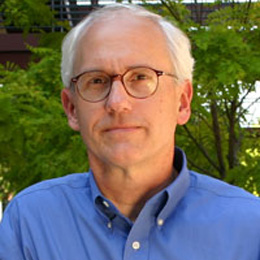Visualizing Better Heart Care for Patients
Dr. Paul Yock was a fellow in cardiology in the early 1980s when he became interested in the use of balloon catheters to treat blocked coronary arteries. This new treatment, known as balloon angioplasty, was a breakthrough but also problematic: approximately 40% of patients experienced restenosis, a condition in which arterial blockage recurs after the procedure, and would require additional procedures that could be painful and time-consuming. The reason for this was not fully known, poor visualization was a problem for doctors, who relied on a technique producing a limited two-dimensional view of the blood vessel.
During his training in coronary angioplasty, Dr. Yock devised a solution to the visualization problem. He came up with the idea of putting a small ultrasound transmitter on the tip of the catheter, which would then be attached to computerized ultrasound equipment to provide real-time, high resolution images of the artery. This breakthrough technique and system came to be called Intravascular Ultrasound (IVUS). Dr. Yock and his colleagues then created a company to patent and distribute his invention. The company worked with the Food and Drug Administration to gain approval by demonstrating safety and making small alterations to improve the system. The system was approved and is today used in angioplasty and other coronary procedures.
Dr. Yock continued his innovative work, obtaining 44 issued patents, and is responsible for other medical technology innovations. Among his inventions are the Smart Needle Doppler Ultrasound System and the Rapid Exchange Catheter System™. He now focuses on teaching and mentoring through his work as co-chair of Stanford University’s Department of Bioengineering and director of the Stanford Program in Biodesign. Dr. Yock has been and remains driven by the need to improve health care and patient outcomes. Countless patients worldwide are the beneficiaries of his visualization of better medical technology.
